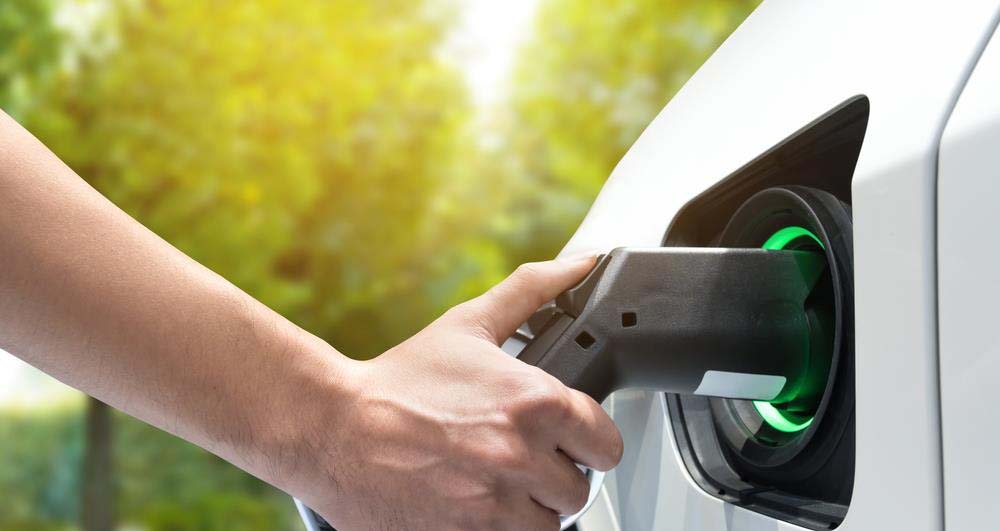Not found what you are looking for?
If you require further assistance, please fill out the form so one of our team members can contact you and help you find what you need.
If you require further assistance, please fill out the form so one of our team members can contact you and help you find what you need.

New petrol and diesel cars will no longer be sold in the UK from 2035, and the US is aiming for half of all new vehicle sales to be electric by 2030. So, before long, it’s likely that far more of us will be behind the wheel of an electric vehicle (EV). With the EV seen an integral part of the transition to a low-carbon economy, private vehicle charging capability has been a significant point of discussion, as has grid capacity.
Outlining EV charging options, we have mono-directional – from grid to vehicle – and bi-directional. With bi-directional we have vehicle-to-home (V2H), vehicle-to-grid (V2G), and vehicle-to-load (V2L), where the vehicle is used to power or charge an external device.
Bi-directional charging is of particular importance when looking to the near future. In early 2022 the International Energy Agency (IEA) reported that there could be as many as 230 million electric vehicles worldwide by 2030. This represents a new demand placed on an electricity grid not envisaged at point of development.
Meeting this new electricity demand challenge, often referred to as ‘balancing the grid’, has become critical. In simple terms, ‘supply-and-demand’ meets peak and off-peak usage. As just one, admittedly extreme, example of what happens when demand outstrips supply, South Africa has what it calls ‘load shedding’ where scheduled rolling power outs are a response to demand outstripping available generation capability and supply. In the UK, whilst such an outcome is extremely unlikely, the subject is, naturally, complex, and nuanced. However, for our conversation, this simple overview gives a window into the potential challenges of an EV dominant near future.
We’ll use a well-known example, the Nissan Leaf; battery size 40Kw. “Trials have shown that 10 Nissan Leafs can store as much energy as 1,000 homes consume in an hour.”
At peak time, a V2G owner can sell energy back to the grid.
As OVO Energy point out, “What’s most important to EV owners is having enough energy in their car battery when they need to drive their car. This can be easily controlled through an app on the owner’s phone. With V2G, grid balancing is possible for the whole time an EV is plugged into the smart charger. But always with a (smart) eye on battery levels.”
“It makes most sense for an EV owner to charge overnight, when the grid is in less demand, and electricity is cheaper. Then they can sell it back at peak times, at a higher rate.”
Bearing in mind that as most vehicles are stationary some 95% +/- of the time, meaning that owners have a very large, mobile, electricity storage unit sat outside their home, or office. From a practicality point of view it is also worth mentioning here; “with a 40kW battery, for example, (the Nissan Leaf) would take around 6 hours to charge from empty with a 7kW home charging point.” The same, “40kW Nissan Leaf using a 50kW charger (currently the most popular in the UK) can be charged to 80% of its capacity in as little as an hour”, with these, and other, faster, charger types typically found at motorway service stations.
UK government is offering financial support of up to 75% for the installation of up to 40 workplace located chargers per business. The scheme, known as ‘The Workplace Charging Scheme’ offers a grant of up to £14000 in funding to support the installation of workplace electric vehicle chargers.
To support what is a rapidly growing industry sector, Activate Trade Training is delivering the City & Guilds Level 3 Electric Vehicle Charge Point Installation Qualification – a 2 Day Course – which is also a OZEV recognised and accredited qualification, approved for OZEV grants, funding, and finance.
This course is designed for competent individuals who are looking to enhance their current skill and knowledge, enabling them to install domestic, commercial and “on street” vehicle charging points.
Course details can be found by clicking here.
To discuss specific requirements, please call the ATT team on +44 20 8533 3794